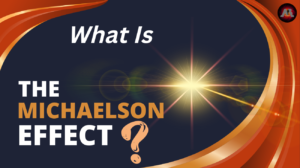We all wear masks—not the kind on stage or the protective ones from recent years, but invisible masks made of habits, expectations, and the need to fit in. These social masks, or personas, are the faces we show the world. But are they really who we are?
Persona vs. Authentic Self
Carl Jung introduced the idea of the persona as the social face we wear. It’s a middle ground between our true inner self and what society expects. This mask isn’t bad by itself; it helps us connect, work, and belong. But trouble starts when the mask becomes all we know, and we forget the real person underneath.
Our authentic self is raw and complicated. It holds our fears, dreams, contradictions, and values. It’s not always neat or easy to share, which is why we often hide it.
The Gaze of Others: Mirror or Cage?
How we act often depends on how we think others see us. The gaze of others can feel like a mirror reflecting who we are or a cage trapping us.
From childhood, we learn to change ourselves—talk a certain way, smile more, hold back feelings—to get approval. Whether at school, work, or online, we perform versions of ourselves that seem “acceptable.” Over time, we might even start to believe this performance is the real us.
But always performing takes a toll. It can lead to burnout, emptiness, or a quiet pain from not being truly seen.
Why Do We Wear Masks?
At the heart of it, the persona is about love and connection. We want to belong. We fear rejection. Showing our true selves, with all our flaws, feels risky. What if we’re not enough? What if we’re too much?
So we curate, filter, and perform—not to deceive, but to hope the mask will win the love we worry the real self might lose.
Can We Be Loved Without the Mask?
Real connection needs vulnerability. It means lowering the mask, even a little, and asking, “Can I be myself—and will you still stay?”
It’s not about ditching the persona completely. The social mask can be helpful and even necessary. The goal is balance—knowing when we’re performing and when it’s safe to be real.
The self beneath the mask deserves love too—maybe even more because it’s genuine.
Key Takeaways
- The persona helps us fit in but can hide our true self.
- We adjust ourselves to others’ expectations from a young age.
- Constantly wearing a mask can cause emotional pain.
- We wear masks to seek love and avoid rejection.
- True connection requires showing our authentic self.
- Balance between persona and authenticity is essential.
FAQs
Q: Is wearing a persona always bad?
- A: No. It helps us navigate social situations and belong. Problems arise when it replaces our true self.
Q: How can I tell if I’m too stuck in my persona?
- A: If you feel exhausted, empty, or disconnected from who you really are, it might be a sign.
Q: How do I start showing my authentic self?
- A: Begin in safe spaces with people you trust. Share small truths and see how it feels.
Q: Can people accept me if I’m authentic?
- A: Yes. Real connection grows from vulnerability, even if it feels scary at first.
Wearing masks is part of being human. But the real challenge is knowing when to take them off and let others see the person beneath. That’s where true connection—and love—begin.










